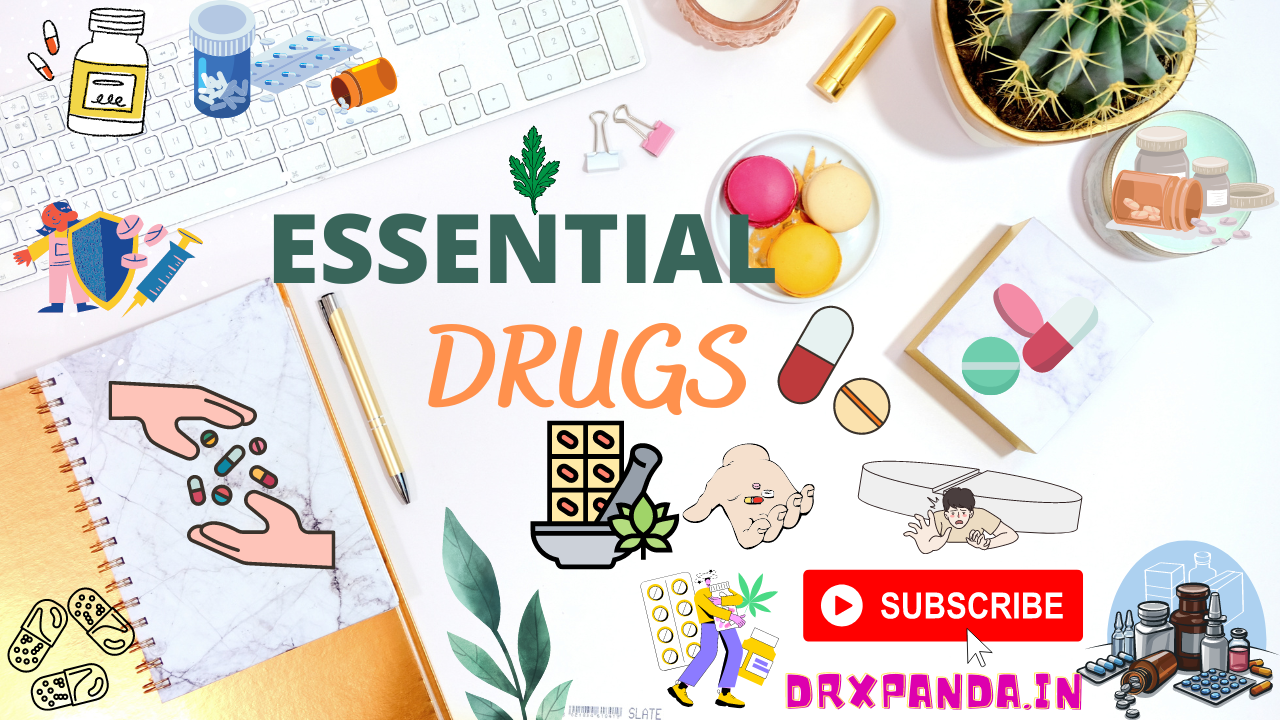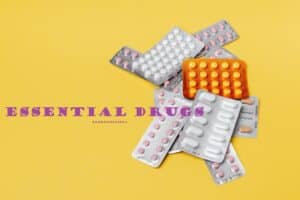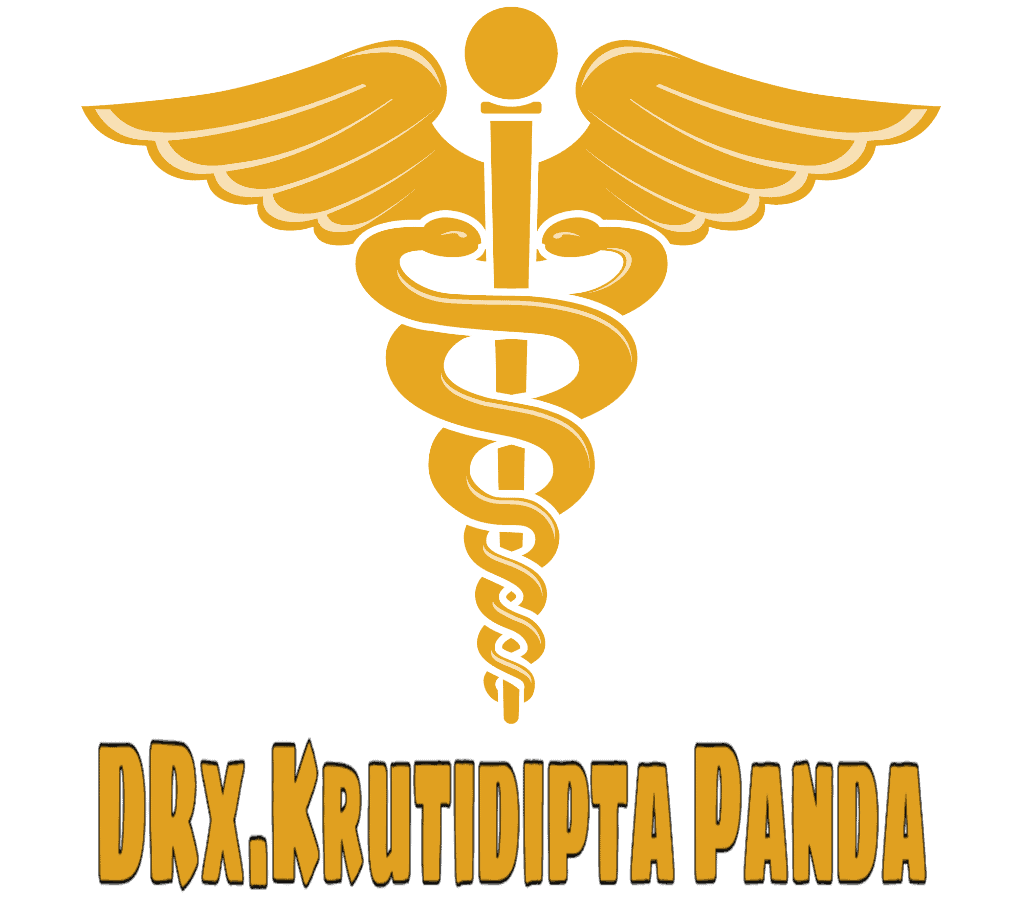Essential drugs, also known as essential medicines, are medications that are considered to be necessary and fundamental for addressing the healthcare needs of a population. The concept of essential drugs was introduced by the World Health Organization (WHO) in the 1970s.
Here are some key details about essential drugs:
- Selection Process: Essential drugs are selected based on their safety, efficacy, quality, and cost-effectiveness. The WHO, in collaboration with national health authorities, establishes lists of essential drugs tailored to meet the specific needs of different countries or regions.
- Accessibility and Affordability: Essential drugs aim to ensure that vital medications are available and affordable to all individuals and communities. They are typically affordable, cost-effective, and available in adequate quantities, irrespective of socioeconomic status.
- Therapeutic Coverage: Essential drugs cover a broad range of health conditions, including common diseases, major infectious diseases, chronic conditions, and reproductive health needs. The lists prioritize medications that are considered the most effective for specific conditions while taking into account factors such as local prevalence, treatment guidelines, and available evidence.
- Rational Use: Essential drugs promote rational drug use, encouraging healthcare providers to prescribe and use medications based on evidence-based guidelines and appropriate indications. This helps minimize unnecessary use of medications, combat antimicrobial resistance, and improve patient safety.
- Standard Treatment Guidelines: Essential drugs are often accompanied by standard treatment guidelines that provide healthcare professionals with information on proper drug selection, dosing, administration, and monitoring.
- Update and Revision: The lists of essential drugs are regularly updated and revised by the WHO and national authorities to reflect emerging health needs, advances in medical science, changes in disease patterns, and new drug developments.
By focusing on essential drugs, healthcare systems can prioritize the availability and appropriate use of medications that have the greatest impact on public health, ensuring equitable access to necessary treatments and promoting effective healthcare delivery.
THE ESSENTIAL DRUGS (MEDICINES) CONCEPT The WHO defines Essential Drugs* (medicines) as “those that meet the population’s primary healthcare needs.” They are chosen considering public health significance, efficacy and safety evidence, and comparative cost-effectiveness.

Essential medicines are designed to be available at all times and in adequate amounts, in suitable dosage forms, with assured quality and adequate information, and at a price that the individual and the community can afford within the framework of functioning health systems. It has been recognized that only a few medications, out of the many available, can cover the health care needs of the majority of people in any country and that many well-tested and less priced drugs are equally (or more) efficacious and safe than their newer, more expensive congeners. To make the best use of resources, governments (particularly in impoverished countries) should prioritize these pharmaceuticals by designating them as essential medicines.
The World Health Organization has established guidelines to guide the selection of critical medicines.
(i) Clinical studies should provide adequate data on its efficacy and safety.
(ii) It should be supplied in a form that ensures quality, including bioavailability and storage stability.
(iii) Its selection should be based on the prevalence of diseases, the availability of facilities and qualified professionals, financial resources, and genetic, demographic, and environmental factors.
(iv) In the event of two or more identical medications, the decision should be determined based on their relative effectiveness, safety,
*Because the term “drugs” is sometimes interpreted to represent illegal substances, the terminology in the 12th list (2003) has been modified from “essential drugs” to “essential medicines” to signify pharmaceutical preparations used in clinical healthcare practice. Quality, pricing, and availability The cost-benefit ratio should be a primary consideration.
(v) The decision may also be impacted by comparable pharmacokinetic features and local manufacturing and storage capabilities.
(vi) The majority of critical medications should be single substances. Fixed ratio combination products should be included only when the dose of each ingredient fits the needs of a specific population group, and the combination has a proven advantage in terms of therapeutic impact, safety, adherence, or reducing the establishment of drug resistance.
(vii) The selection of essential medications should be a constant process that takes into account changing public health goals, epidemiological conditions, the availability of improved medicines/formulations, and advances in pharmacological knowledge.
(viii) Recently, it has been highlighted that critical drugs should be chosen in accordance with logically formulated treatment standards.
ESSENTIAL DRUGS
Introduction of essential DRUGS
Have you ever pondered over the term “essential drugs”? In a world overflowing with various types of medicines, some stand out as critically vital. These are the essential drugs, the lifesavers, and the cornerstones of global health.
What Are Essential Drugs?
Essential drugs, as the name suggests, are considered the most effective and safe to meet the most important needs in a health system.
Definition and Explanation
Simply put, essential pharmaceuticals are medications identified by the World Health Organisation (WHO) that should be available at all times, in the appropriate dosage forms, to anyone who requires them. Individuals and communities alike should be able to afford them.
Examples of Essential Drugs
Examples of essential drugs include antibiotics like amoxicillin, painkillers like paracetamol, life-saving drugs like insulin for diabetes, and antiretrovirals for HIV/AIDS treatment.
Examples of essential drugs can vary depending on the specific country or region. However, here are some examples of commonly included essential drugs as per WHO suggest
- Analgesics and Antipyretics: Paracetamol (acetaminophen), ibuprofen, aspirin.
- Antibiotics: Amoxicillin, ceftriaxone, azithromycin, penicillin.
- Antimalarials: Chloroquine, artemisinin-based combination therapies (ACTs) like artemether-lumefantrine.
- Antiretrovirals: Tenofovir, lamivudine, efavirenz, lopinavir/ritonavir.
- Oral Contraceptives: Combined oral contraceptive pills, progestin-only pills.
- Antihypertensives: Amlodipine, lisinopril, hydrochlorothiazide.
- Antidiabetic Medications: Metformin, insulin.
- Antipsychotics: Risperidone, haloperidol.
- Anti-inflammatory Drugs: Prednisolone, diclofenac.
- Antiepileptics: Carbamazepine, phenytoin.
It’s important to note that the specific list of essential drugs may vary between countries or regions based on factors such as disease prevalence, treatment guidelines, and available resources. National or regional health authorities, in collaboration with the World Health Organization, establish and update their own essential drug lists to meet the healthcare needs of their populations.

The World Health Organization (WHO) and Essential Drugs
The WHO plays a pivotal role in the field of essential drugs.
The World Health Organization (WHO) plays a crucial role in the promotion and development of essential drugs. Here’s how WHO is involved:
- Essential Medicines List: The WHO publishes the Model List of Essential Medicines (MLEM) on a regular basis. This list serves as a guide for countries to develop their own national essential drug lists. It includes medications deemed necessary for addressing priority health needs and represents a consensus on the most effective and safe medicines.
- Selection Criteria: The WHO sets specific criteria for selecting medicines for the MLEM, emphasizing their clinical efficacy, safety, quality, and cost-effectiveness. The selection process involves a thorough review of scientific evidence, expert consultations, and consideration of disease burden and public health priorities.
- Technical Support: WHO provides technical support to member countries in the development, implementation, and evaluation of their essential medicines programs. This includes guidance on drug selection, procurement, supply chain management, quality assurance, and rational use of medicines.
- Access and Affordability: WHO advocates for equitable access to essential medicines, particularly in low- and middle-income countries. They work towards promoting fair pricing, generic competition, and addressing barriers that limit the availability and affordability of essential drugs.
- Monitoring and Advocacy: WHO monitors the availability, accessibility, and affordability of essential medicines globally. They advocate for policies and initiatives to ensure sustainable financing, efficient supply chains, and quality assurance mechanisms for essential drugs.
By providing guidance, technical support, and advocating for access to essential drugs, the WHO plays a pivotal role in improving healthcare systems’ ability to provide necessary and affordable medications to populations worldwide.
Role of WHO in Essential Drug Selection
The WHO selects essential medications using criteria based on scientific evidence. These medications have demonstrated efficacy in treating a wide variety of common conditions.
The Essential Medicines List (EML)
In Every two years, the WHO updates the Essential Medicines List (EML). This list consists of the minimum medicine needs for a basic healthcare system, listing the most efficacious, safe, and cost-effective medicines for priority conditions.
Importance of Essential Drugs
Essential drugs hold significant importance for healthcare systems and public health. Here are some key reasons why essential drugs are crucial:
- Meeting Basic Healthcare Needs: Essential drugs address the most prevalent and significant health conditions in a population. They ensure that essential treatments are available to address common illnesses, infectious diseases, chronic conditions, and reproductive health needs.
- Equitable Access: Essential drugs promote equitable access to necessary medications. By prioritizing affordability, availability, and appropriate use, they aim to ensure that essential treatments are accessible to all individuals, regardless of their socioeconomic status or geographic location.
- Cost-Effectiveness: Essential drugs are selected based on their cost-effectiveness. They represent the most efficient use of resources to achieve maximum health benefits. By focusing on cost-effective treatments, essential drugs help optimize healthcare spending and allocate resources wisely.
- Rational Drug Use: Essential drugs play a crucial role in promoting rational drug use. They are accompanied by evidence-based treatment guidelines that help healthcare professionals make informed decisions about drug selection, dosing, and monitoring. This helps minimize unnecessary drug use, reduce medication errors, and combat issues like antimicrobial resistance.
- Public Health Preparedness: Essential drugs contribute to public health preparedness, particularly in emergencies and outbreaks. They ensure that critical medications are readily available to address sudden increases in healthcare demand and mitigate the impact of public health crises.
- Quality Assurance: Essential drugs emphasize quality assurance to ensure that medications are safe, effective, and of good quality. They encourage adherence to regulatory standards, quality control measures, and good manufacturing practices, protecting patients from substandard or counterfeit drugs.
- Standardization and Efficiency: Essential drugs promote standardization in healthcare systems. By defining a core set of medications, they facilitate procurement, supply chain management, training, and education. Standardization improves efficiency, reduces medication errors, and simplifies decision-making processes for healthcare professionals.
Overall, essential drugs play a vital role in improving healthcare outcomes, ensuring equitable access to necessary treatments, and optimizing healthcare resources. They are essential for building robust and effective healthcare systems that meet the diverse needs of populations.
Ensuring Access to Basic Healthcare
Having a standardized list of essential drugs helps to streamline healthcare delivery. It ensures that everyone, regardless of economic condition, has access to the most important drugs.
Reducing Healthcare Costs
Essential drugs are typically generic drugs, which are cheaper than brand-name equivalents. Thus, they play a critical role in controlling healthcare costs.
Challenges in Accessing Essential Drugs
Accessing essential drugs is not always straightforward.
Affordability
Despite being cheaper than their branded counterparts, essential drugs can still be unaffordable for many, particularly in low-income countries.
Supply Chain Issues
Inadequate supply chains can make essential drugs unavailable in some areas, especially remote or conflict-affected regions.
Quality and Counterfeit Drugs
In some places, poor regulation and oversight can lead to the circulation of low-quality or counterfeit essential drugs.
Solutions and Strategies for Improved Access
Addressing the challenges in accessing essential drugs requires multi-faceted strategies.
Affordable Pricing Strategies
Government subsidies, bulk purchasing agreements, and patent law reforms can help make essential drugs more affordable.
Strengthening Healthcare Infrastructure
Improving supply chains and expanding healthcare facilities can ensure essential drugs reach all who need them.
Global Cooperation and Policy
International cooperation and strong health policies can help improve the quality of essential drugs and prevent the spread of counterfeit products.
Conclusion
Essential drugs are a fundamental part of any effective healthcare system. While challenges exist in ensuring universal access, concerted local, national, and global efforts can make these life-saving medicines available to all who need them.
Frequently Asked Questions
What are some examples of essential drugs?
Examples include antibiotics like amoxicillin, painkillers like paracetamol, and life-saving drugs like insulin and antiretrovirals for HIV/AIDS treatment.
How can access to essential drugs be improved?
Strategies include affordable pricing, strengthening healthcare infrastructure, and global cooperation and policy.
What challenges exist in accessing essential drugs?
Challenges include affordability, supply chain issues, and the circulation of low-quality or counterfeit drugs.
Why are essential drugs important?
Essential drugs are important as they help ensure access to basic healthcare and control healthcare costs.
Who determines what drugs are essential?
The World Health Organization (WHO) determines which drugs are considered essential.

1 thought on “ESSENTIAL DRUGS”